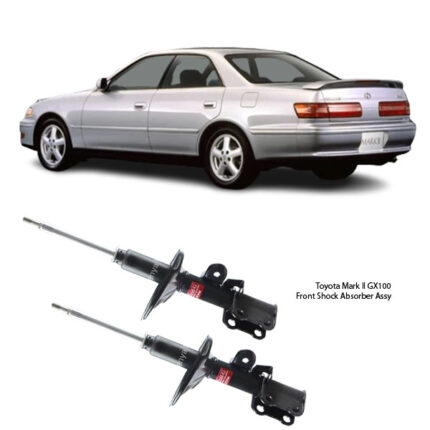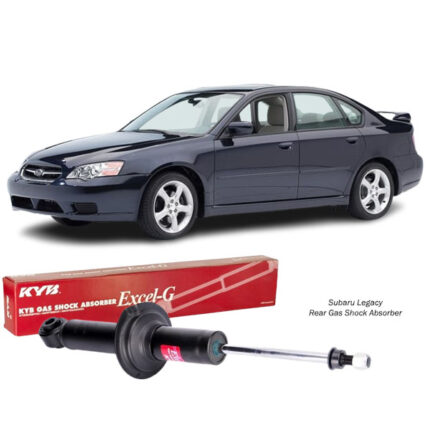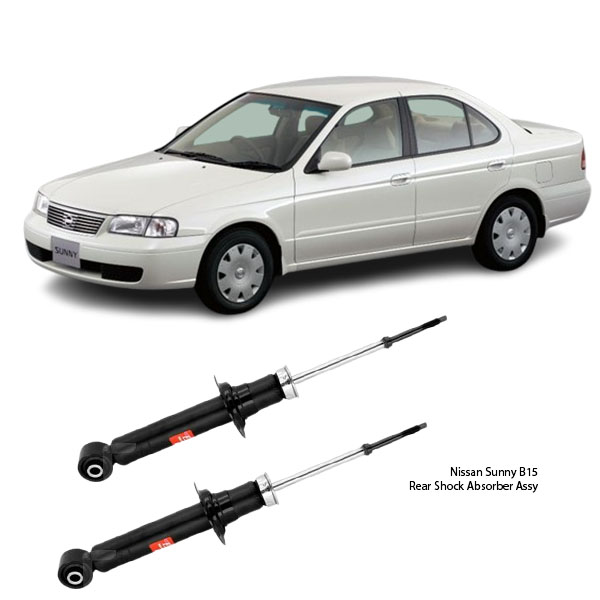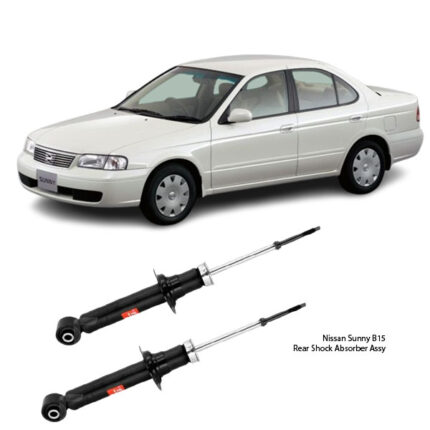Get Nissan Sunny B15 Rear Shock Absorber Assy 341279 in Kenya
The Rear Shock Absorber Assembly is a marvel of mechanical design, built to manage motion, dampen vibrations, and enhance stability. Though often overlooked, this powerful component is essential in ensuring smooth movement and safe handling—especially at the rear end of any machine or transport system relying on suspension.
What Is a Rear Shock Absorber Assembly?
The shock absorber assembly at the rear is a complete unit that includes a damper, mounting hardware, bushings, and sometimes springs or dust boots. Its main job? To absorb and dissipate energy from road irregularities, sudden motions, or weight shifts.
Without it, every bump, dip, or surface change would be transferred directly through the rear frame, leading to discomfort, excessive bouncing, poor stability, and accelerated wear of surrounding parts.
Components of the Rear Shock Absorber Assy
Let’s break it down :
1. Shock Body / Cylinder
This is the main outer tube filled with hydraulic oil. It houses the piston and guides its movement. The shock body must be strong and resistant to corrosion and impact.
2. Piston & Piston Rod
The piston moves up and down inside the cylinder. As it moves, it pushes hydraulic fluid through small holes (valves), slowing the motion. The rod is connected to the piston and extends outward to connect to the rear suspension frame.
3. Valving System
The valving controls how fast the hydraulic fluid can flow, which directly affects the damping force. Different valve settings allow for adjustments in ride softness or firmness.
4. Hydraulic Oil
This fluid resists motion and converts kinetic energy into heat, which is dissipated through the shock body. It also provides lubrication and helps in temperature control.
5. Mounting Eyes / Brackets
These are the connection points at both ends of the assembly—upper and lower. They are designed to securely attach the assembly to the frame and suspension arms while allowing limited pivoting movement.
6. Bushings
Made of rubber or polyurethane, these insulate vibrations and noise while allowing for minor flex between connected components. They play a big role in comfort and durability.
7. Dust Boot (Optional)
A protective sleeve covering the piston rod, keeping out dirt, mud, and moisture to prevent premature wear or corrosion.
How Does It Work?
When movement occurs—such as going over uneven terrain—the rear shock absorber compresses as weight shifts or force is applied. The piston inside the shock pushes hydraulic oil through internal valves, which slows the piston’s movement and dampens the force. When the motion reverses (rebound), the same process occurs again in reverse.
This damping action ensures that movement is gradual and controlled rather than abrupt and erratic. Without this, weight transfer would become unstable, leading to bouncing, swaying, or even loss of control.
Functions & Benefits
Let’s explore the core functions and advantages of the rear shock absorber assembly:
Stability
By controlling the movement of the rear suspension, it keeps the structure stable—even during acceleration, deceleration, or sharp turns.
Comfort
It absorbs vibrations and harsh movements, minimizing shock transfer to the frame or cabin and ensuring a smoother experience.
Safety
Maintaining consistent contact with the surface means improved grip, better handling, and reduced stopping distances under pressure.
Protection of Other Components
Without proper shock absorption, all surrounding mechanical parts—like the suspension arms, bushings, and joints—would wear out much faster.
Longevity
A well-designed assembly resists heat buildup, corrosion, and physical damage, ensuring years of service when maintained.
Types of Rear Shock Absorbers
There are several types, each offering unique performance benefits:
-
Twin-Tube Hydraulic: Standard design, reliable, and cost-effective.
-
Gas-Charged Twin-Tube: Reduces aeration (foam), providing more consistent damping.
-
Mono-Tube: Higher performance, with better heat dissipation.
-
Electronically Adjustable: Adaptive systems that change damping characteristics based on terrain or settings.
Installation Considerations
Proper installation is key. Here are vital things to keep in mind:
-
Torque Specifications: Fasteners must be tightened to the correct torque to prevent failure.
-
Orientation: Some shocks are directional; installing them backward reduces performance.
-
Bushings: Always inspect or replace worn bushings during installation.
-
Check for Leaks: Leaking hydraulic fluid means the shock is compromised.
Maintenance Tips
To keep your rear shock absorbers performing well:
-
Inspect Regularly: Look for signs of oil leaks, dented tubes, or corroded rods.
-
Check for Noise: Unusual sounds like knocking or clunking indicate internal wear or broken bushings.
-
Watch Your Ride: Increased bouncing, instability, or rear-end dipping may suggest worn shocks.
-
Keep It Clean: Dirt buildup can damage the seals or piston rod over time.
-
Replace in Pairs: If one side is damaged or worn, replace both rear units to maintain balance.
When to Replace?
The rear shock absorber assembly doesn’t have a fixed expiry date. However, replacement is typically recommended every 60,000 to 100,000 km, depending on use conditions. Frequent exposure to rough terrain, heavy loads, or aggressive use can significantly shorten this lifespan.
Did You Know?
🔹 A worn rear shock absorber can increase braking distance by up to 20%.
🔹 Gas-charged shocks use nitrogen to prevent oil foaming and maintain performance under pressure.
🔹 The first hydraulic shock absorber was introduced in the early 20th century, revolutionizing suspension systems forever.
Follow us on Facebook for more parts.




